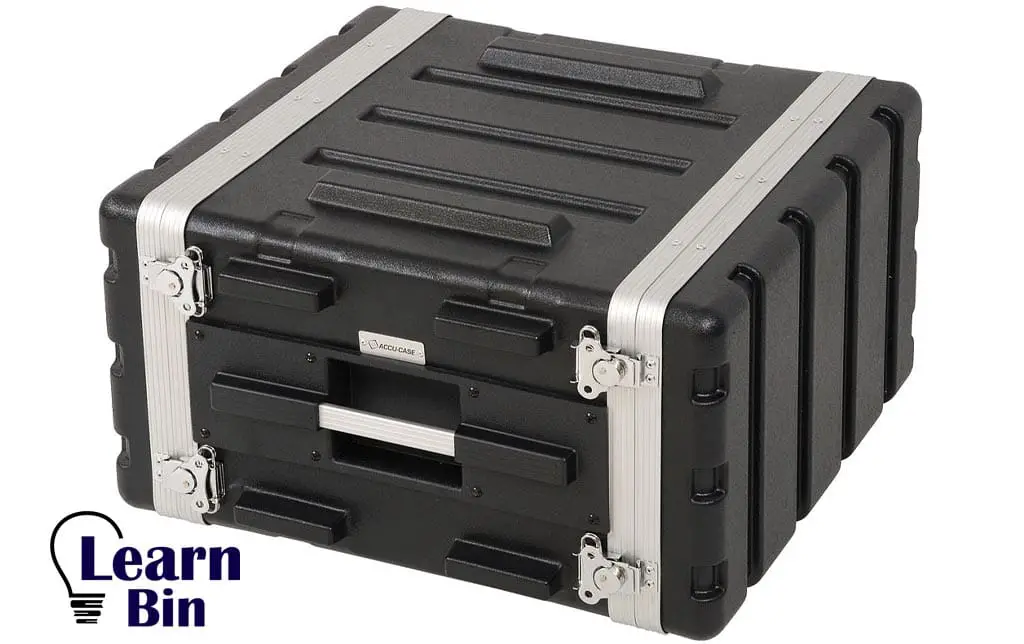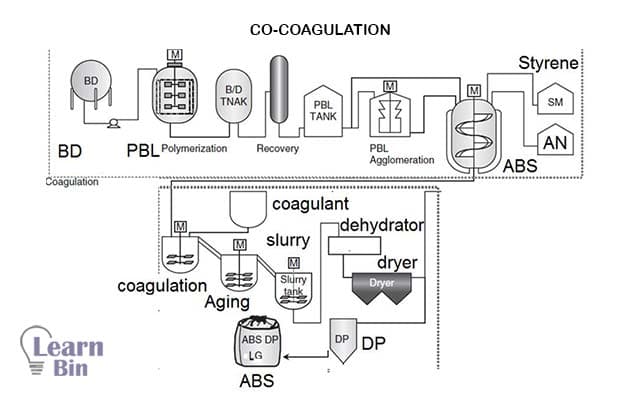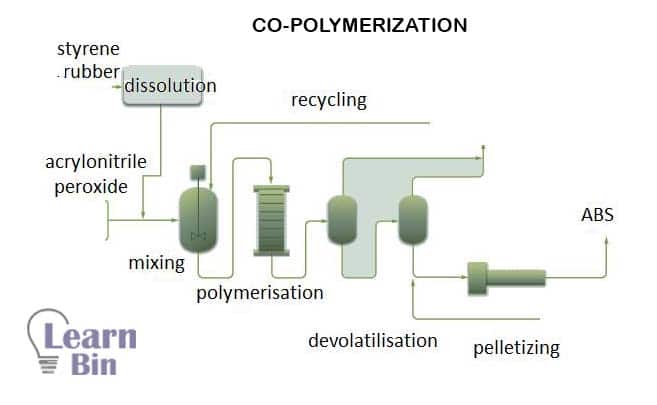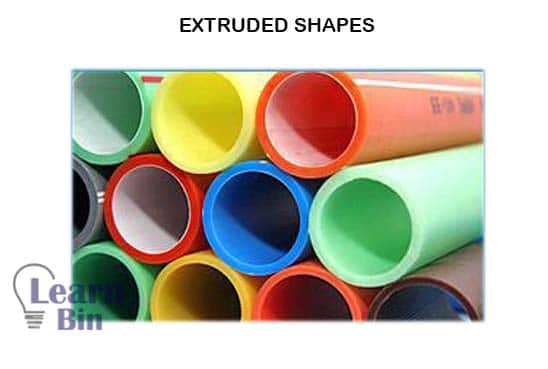More results...


ABS is a synthetic thermoplastic resin that is made of three-dimensional monomers which are acrylonitrile, butadiene, and styrene. These monomers have different properties due to their chemical structure.
| Monomer | Property |
| Acrylonitrile | Strength Chemical resistance |
| Styrene | Rigidity Processability |
| Butadiene | Impact resistance Flexibility |
ABS is a two-phase polymer blend. A continuous phase of styrene-acrylonitrile copolymer provides the materials -
The toughness of ABS is the result of sub-microscopically fine poly-butadiene rubber-grafted polymer particles uniformly distributed in the SAN matrix.
Acrylonitrile has an acrylic group (CN). This group can form strong Hydrogen bonds. So, it gives strength to the ABS polymer. The bulky group in the styrene monomer gives rigidity. Butadiene monomer has a C=C bond; so, it gives flexibility. And also, it can absorb external impacts.

The properties of the final polymer can vary, by varying the proportions of the three components. Generally, 15% to 35% of acrylonitrile, 5% to 30% of butadiene, and 40% to 60% of styrene are mixed together.
Mainly there are three manufacturing processes for ABS plastic. These are blending, co-coagulation and copolymerization.
Styrene-butadiene rubber (SBR) and Styrene acrylonitrile (SAN) are blended together by specific blending machines. Generally, the twin-screw extruder is used to blend SBR and SAN. But sometimes SAN and SBR can be mixed in an internal mixture first and then mixed by using a single screw extruder.
SAN and polybutadiene are mixed together in a latex state. Then the mixture is let to be coagulated. This process is called co-coagulation. After drying the coagulum, ABS granules are made.

Co-polymerization for the production of ABS resins can be largely divided into two processes. They are listed below.
Mass polymerization or bulk polymerization is the process that is carried out by mixing undiluted acrylonitrile peroxide monomer with styrene rubber. The free radical initiator which is dissolved in the monomer phase is used as the initiator. The polymerization process is occurring in a special chamber. After the devolatilization process, ABS polymer will be pelletized.

Emulsion polymerization is the process in which polymerization occurs in small droplets which are called emulsions. Generally, water is used as the continuous phase. Polybutadiene latex, styrene monomer, and acrylonitrile monomer are dispersed in water. An initiator that is dissolved in the monomer is used. monomers are dispersed in the continuous phase by mechanical agitation. To stabilize the monomer droplets surfactant is added.
ABS polymer is a graft polymer. Polyacrylonitrile (PAN), Polystyrene (PS), and Styrene acrylonitrile (SAN) chains are grafted to the polybutadiene (PB) backbone.
ABS show excellent resistance to diluted acid, diluted alkalis, oils, and greases. There is moderate resistance to aliphatic hydrocarbons. ABS shows poor resistance to aromatic hydrocarbons, halogenated hydrocarbons, and alcohols.
| Tensile strength | 400 – 500 MPa |
| Impact strength | 10 – 20 KJ/m2 |
| Thermal expansion coefficient | 70 – 90 × 10-6 |
| Maximum usage temperature | 80 – 95 ℃ |
| density | 1.0 – 1.05 g/cm |
The reasons for the widespread acceptance of ABS are listed below.
The main disadvantages of ABS are listed below.
ABS is processed into end products by most thermoplastic processing methods such as injection molding, extrusion, blow molding, calendaring, and vacuum forming.
ABS may absorb up to 0.3% moisture and therefore it must be stored under dry conditions.
There is a greater tendency to degradation than Polystyrene (PS) during processing. So, it is very important not to overheat. And avoid too high screw speed and back pressure during molding.
Being an amorphous material, ABS has a low molding shrinkage.
In both protective and decorative applications productions, molded ABS products are used.
Examples:-

Typical Injection molding conditions for ABS are,
Some of the Extruded shapes are listed below.
Some of the main, largest application areas Of ABS plastics are Pipe and fittings manufacturing.

Typical extrusion conditions for ABS are,
Over a temperature range of 130(403.15K) to 190°C (463.15K), ABS can be thermoformed. The optimum conditions depend on the below-mentioned factors.
Typical vacuum-formed products from extruded ABS sheets are listed below.


The cover image was created from an image by muzyczny, licensed under CC BY-SA 4.0, via Wikimedia Commons